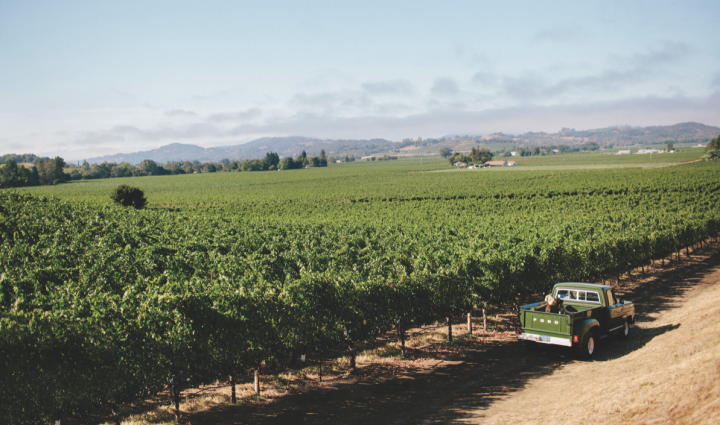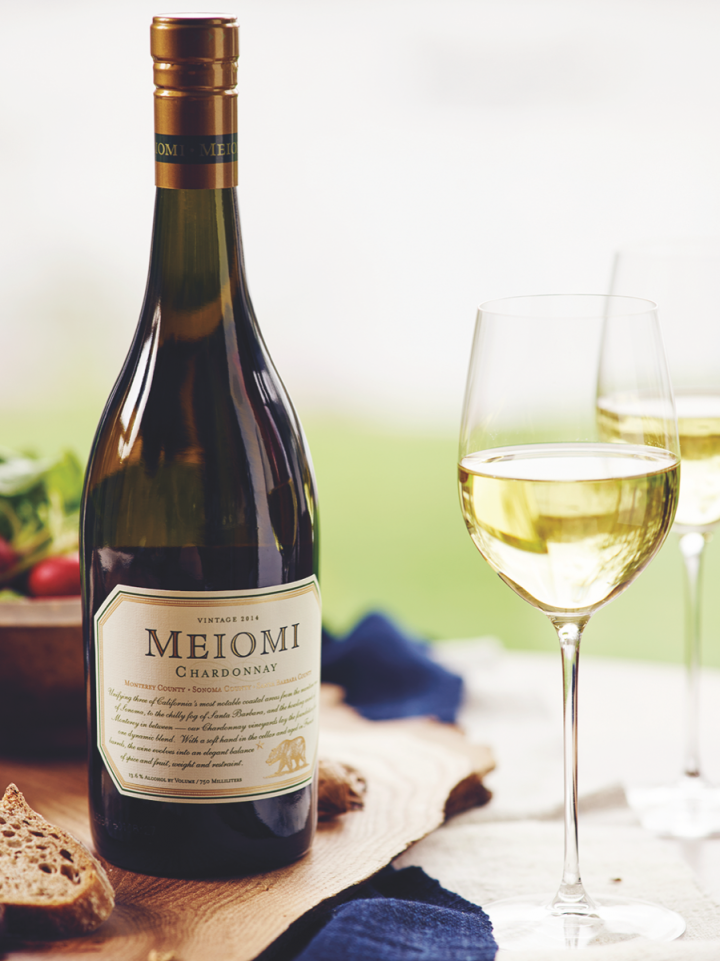
At Pacific Standard Coastal Kitchen in San Diego’s Little Italy neighborhood, adventurous wine drinkers can choose the 2014 Wind Gap Trousseau Gris, a Russian River wine that sells for $12 a glass. Other white wines by the glass tend toward the mainstream, including the ever popular 2014 Kendall-Jackson Chardonnay ($10).
Sommelier Matthew Delgado says he likes to push guests who are open to a bit more adventure in their wine choices. “If somebody wants to go down a more interesting road, we can take them there,” he says. “If they don’t, we have other options. We’re connected to a Hilton Hotel. We wanted to cater to a broad audience and have some familiar labels for them, but also give them something they might not have had before.”
Tatiana Konovalov, assistant food and beverage manager at The Biltmore Santa Barbara, says the wine staff there is “inching our way into” some of the less mainstream white wine offerings coming from California wineries, although progress is slow. Customers continue to ask for Chardonnay, Pinot Grigio and other white varietals that have dominated the U.S. market for years. “White wines are making a comeback,” Konovalov says. “A lot of people are experimenting with different wines, and it’s fun to see varietals that aren’t Chardonnay. People are playing around with Italian varietals. A lot of grapes that you typically see in blends have emerged as single-varietal wines. Viognier has become very popular.”

Chardonnay's Dominance
Whether that excitement and experimentation turns into widespread customer adoption remains to be seen. Chardonnay has dominated the California white wine sector for years and looks likely to remain in the lead position for the foreseeable future. “If Cabernet is king, Chardonnay is queen,” notes Barbara Hermann, wine buyer for the Chicago-area retail chain Binny’s Beverage Depot.
Many major California producers are all-in on Chardonnay. “Chardonnay is a strong performer for us, and we’ve built a robust portfolio around it,” says Paul Bourget, vice president of strategic insights for wine and spirits at Constellation Brands. He notes that the three top-performing Chardonnays in Constellation’s portfolio—luxury brand Meiomi, super-premium Tom Gore Vineyards, and Black Box—are all showing strong double-digit sales growth.
At Trinchero Family Estates, Chardonnay showed an 11-percent gain in the 26-week period ended on January 28th of this year, and is increasing share against most other white varietals in the portfolio, other than Sauvignon Blanc, according to senior vice president of marketing Dave Derby. “Our Chardonnay growth is largely driven by Ménage à Trois Gold,” he says. Ménage à Trois Gold, with a suggested retail price of $12 a 750-ml., launched in October 2016. It’s labeled a Chardonnay, but is blended with small amounts of Viognier and Verdelho. The company describes the wine as a “rich, indulgent Chardonnay.”
In fact, the trend in California Chardonnay is to differentiate by style—sometimes overtly and sometimes not—to give the consumer an idea of what to expect, according to Barry Sheridan, senior vice president of marketing for the Americas at Treasury Wine Estates. “Chardonnays are getting more expressive of particular styles, and I think consumers respond to that trend,” Sheridan says. “There are Chardonnay drinkers who will vary their style preferences. Once the styles become clear, people are willing to travel across the spectrum. I think crisp Chardonnays, classic Chardonnays and heavier, buttery Chardonnays can all do well, but they do best when clearly defined.”

Chardonnay has been scoring well with millennials and with women 25 to 54 years old,” Vintage Point president David Biggar told Shanken News Daily last year. He adds that consumers strongly favored “buttery” flavor descriptors when selecting Chardonnay styles.
Those styles are juxtaposed against a move by some Chardonnay players away from rich, oaky wines to a leaner, crisper style. For example, in 2014 Treasury’s Chateau St. Jean label launched Bijou Chardonnay ($14 a 750-ml.) to respond to consumer desires for fruity and refreshing flavor profiles. “This wine is up 61 percent, showing that consumers will respond to innovation that helps them find the Chardonnay style they like,” Sheridan says.
For Michael Baldonado, bar manager at MKT in San Francisco, a move toward crisper Chardonnays is a welcome change. “A leaner style of Sonoma Coast Chardonnays is definitely driving whites,” he says.
Luca Bruno, wine director for the Four Seasons Hotel Los Angeles at Beverly Hills, says classic California Chardonnays remain the most requested wines at the hotel’s restaurants, especially those from Sonoma and Russian River Valley. Big brands are popular, but “customers are starting to get to know the smaller producers as well,” he notes. One favored wine is the Liquid Farm White Hill Chardonnay, which is listed at $115 a 750-ml.
Consumers can also expect more innovation. Constellation Brands is rolling out several new Chardonnay offerings. In March, Robert Mondavi Private Selection released a Bourbon Barrel–Aged Chardonnay ($13.99 a 750-ml.), following the brand’s Bourbon Barrel–Aged Cabernet Sauvignon that launched in 2016. Meanwhile, Clos du Bois introduced Lightly Effervescent Chardonnay ($12.99) in April.

Alternative Varietals
Pinot Grigio and Sauvignon Blanc from California came to prominence in the U.S. market on the coattails of their import rivals from Italy and New Zealand, respectively. “Years ago Pinot Grigio was more likely to be Italian than American,” Sheridan notes. “In the United States, when people have the opportunity to buy something equally good or better, they tend to gravitate towards California.”
Sheridan believes there’s continuing opportunity for both varietals. “There will always be a healthy market for varietals that are easy to drink like Pinot Grigio,” he says. For Sauvignon Blanc, the style in wines retailing above $10 has “largely been defined by New Zealand’s particular style,” he notes, adding that it might behoove some winemakers to vary their approach. “A point of view in a crowded category really helps.”
For the Constellation Brands portfolio, Bourget says Sauvignon Blanc and Pinot Grigio each hold a 7-percent to 8-percent share of portfolio volume. Woodbridge and Black Box are top performers for both varietals.
Trinchero Family Estates is also seeing both volume and value growth for the two white varietals, according to Derby. “Trinity Oaks, Monteviña and Three Thieves Pinot Grigio have all experienced double-digit or better growth between the first quarter and fourth quarter last year,” Derby says. “We’re seeing similar advances for Sauvignon Blanc in our Trinchero Napa Valley, Napa Cellars, Joel Gott and Seaglass brands. With Trinchero’s recent acquisition of the Mason, Three Pears and Pomelo brands, we have potential for even higher growth in Pinot Grigio and Sauvignon Blanc.”
At Culina Italian restaurant in the Four Seasons Los Angeles, Pinot Grigio and Vermentino are staples. Bruno says California producers supply those wines made from traditional Italian grapes. “We developed our wine program with American selections, so I had to buy all the Italian varietals growing in California,” he explains. “The American wines are increasing.”
Bruno adds that he’s seeing more experimentation from U.S. winemakers with lesser-known grapes. “Many of the up-and-coming winemakers are being very creative, using indigenous European grape varieties from Italy, Spain, and France,” he says, noting the appeal of such a move.
California Pinot Grigio is also popular at Pacific Standard, but the states’s Vermentino is struggling a bit, according to Delgado. The 2014 Tendu Vermentino is on the restaurant’s by-the-glass list for $13. “It’s a challenge for us because most people don’t know much about it,” Delgado says. “We educate our servers, but it’s hard to get people to go for something they don’t know.”

Other white varietals are being produced at various volume levels. For example, Moscato has relatively high volumes, but low average price points. Treasury’s Sheridan calls it a flash-in-the-pan phenomenon with the primary price points at $4 to $8. Meanwhile, Chenin Blanc has yet to find firm footing. “I would love to see more Chenin Blanc, but there’s not much to work with right now,” says MKT’s Baldonado.
Some marketers are also looking to blends to expand the reach of California white wines. “Ménage à Trois White Blend is seeing a resurgence as the consumer continues to try new offerings in the segment,” Trinchero’s Derby says. Constellation’s Blindfold brand is “carving out a niche with consumers who are looking for unique, bold flavor profiles,” Bourget notes.
Yet thus far, white blends haven’t caught on with consumers the way red blends have. “White varietals are a priority for white wine drinkers,” Hermann of Binny’s says. “There’s a small group of adventurous drinkers who are willing to spend money on white blends.”
Treasury’s Sheridan sees opportunity. “A blend of varietals can be a terrific thing, and if that is true in red wine, it can be true in white,” he says. “It hasn’t yet happened in a big way, but I do believe there is something to be discovered in white blends.”